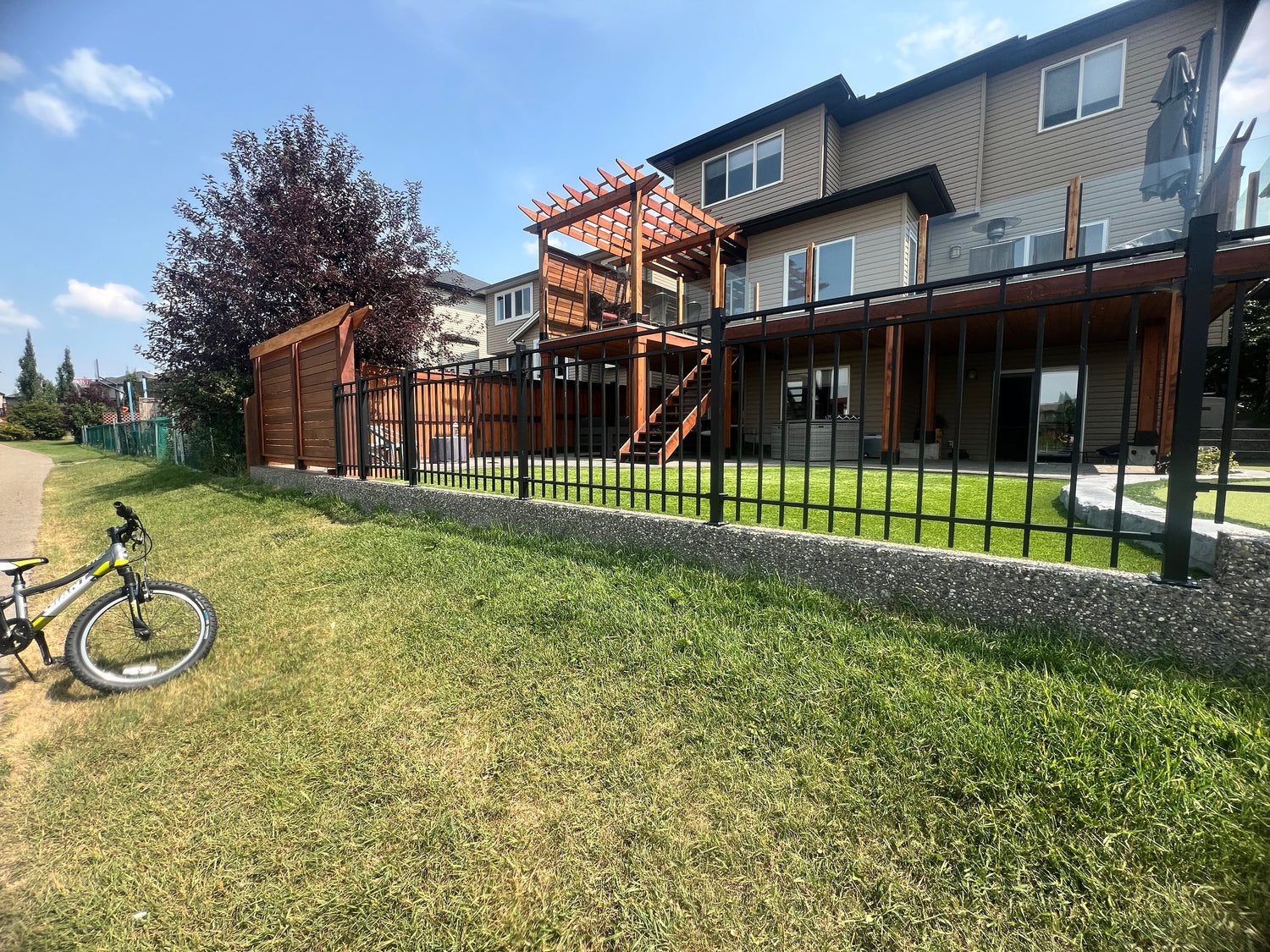Our YouTube channel includes detailed installation guides, frequently asked questions, product overviews and lots more. We are always open to content ideas so please let us know if there is a topic you would like us to cover.
Residential Landscape Architecture: Blending Art, Function, and Nature

In today's bustling world, where private living spaces have become sanctuaries of peace, residential landscape architecture stands out as a pivotal component that blends art, function, and nature. As the demand for personalized and sustainable home environments grows, understanding what is landscape design and the role of a landscape architect in residential projects becomes essential.
What is Residential Landscape Architecture?
Residential landscape architecture involves the planning, designing, and management of outdoor spaces within residential settings. It focuses on integrating the functional aspects of a landscape with aesthetic and environmental considerations, creating harmonious living environments that enhance the overall quality of life. Landscape architects in residential settings are the artists who transform outdoor visions into thriving, tangible spaces.

Key Principles of Residential Landscape Design
1. Functionality and Usability
A landscape must cater to the needs of its users. Whether it's a cozy patio for evening relaxation, a well-manicured garden for entertaining guests, or safe play areas for children, functionality is at the heart of residential landscape architecture.
2. Artistic Expression
Like any form of art, landscape design reflects personal tastes and preferences. The role of the landscape architect in residential projects is to translate these preferences into designs that not only look beautiful but also evoke a sense of place and personality.
3. Sustainability and Environmental Consideration
Modern residential landscape architecture embraces eco-friendly practices, using native plants, sustainable materials, and water-efficient systems to minimize environmental impact. This approach not only enhances biodiversity but also reduces maintenance costs and resource consumption.
4. Integration with Surroundings
A well-designed landscape should complement its surrounding environment rather than compete with it. This integration ensures that the outdoor space enhances the home's aesthetic appeal and feels like a seamless extension of the indoor living areas.
The Role of a Landscape Architect in Residential Projects
Engaging a landscape architect for residential projects can be transformative. These professionals bring a wealth of knowledge in horticulture, design principles, and project management, ensuring that every aspect of the landscape aligns with the homeowner's vision and functional requirements.
Design Process
A residential landscape architect typically follows a structured design process, which includes:
- Analyzing the site and identifying design opportunities and constraints.
- Developing conceptual designs that reflect the homeowner's preferences.
- Creating detailed plans and specifications for construction.
- Overseeing implementation to ensure the design vision is realized accurately.
Frequently Asked Questions
How do I choose the right landscape architect for my residential project?
Look for professionals with experience in residential projects similar to yours. Review their portfolios, ask for references, and discuss your vision to ensure they can meet your expectations.
What is the cost of hiring a landscape architect?
Costs vary based on the scope of the project, the complexity of the design, and the professional's experience. Always request detailed quotes and understand what is included in their services.
Do I need a landscape architect if I have a small garden?
Yes, even small spaces can benefit significantly from professional design. A landscape architect can help maximize the potential of your small garden through innovative design and space-planning techniques.
FAQ: Residential Landscape Architecture
What is residential landscape architecture and how does it blend art, function, and nature?
Residential landscape architecture involves the design and planning of outdoor spaces for private homes, striving to harmonize nature, aesthetics, and functionality. At its core, it is the practice of crafting outdoor environments that not only enhance the beauty of a home but also improve its usability and environmental coherence. This discipline embraces elements of art by emphasizing form, color, and texture to create visually appealing spaces.
It prioritizes function by designing practical, usable areas that meet the homeowner's needs and lifestyle, such as outdoor kitchens, living areas, and play spaces. Additionally, it respects nature by incorporating sustainable practices, using native plants, and enhancing ecological health. By bringing these components together, residential landscape architecture creates outdoor spaces that are both beautiful and livable, seamlessly blending the constructed environment with the natural.
How is residential landscape architecture different from other types of landscape architecture?
While landscape architecture broadly addresses the design and management of outdoor areas, residential landscape architecture is distinct in its focus on private living spaces for single-family homes and small residential communities. Unlike large-scale projects such as urban parks, commercial developments, or public infrastructure, residential landscape architecture is often more personalized and intimate.
It places greater emphasis on the individual preferences and lifestyles of homeowners, allowing for customized solutions. These projects tend to have smaller spatial scales but require a more delicate balance between aesthetics and functionality to create spaces that meet specific homeowner needs. Moreover, residential projects often prioritize safety, privacy, and comfort to ensure a peaceful, enjoyable retreat from everyday life.
What are some common features or elements of residential landscape architecture?
Residential landscape architecture encompasses a variety of design elements and features to create cohesive and functional outdoor spaces. Some common components include:
- Plants and Greenery: Native plants, trees, shrubs, and flower beds provide both aesthetic beauty and environmental benefits, supporting local wildlife and promoting biodiversity.
- Hardscapes: Patios, walkways, retaining walls, and decks are constructed using materials like stone, wood, or concrete, contributing both to the functionality and visual appeal of the landscape.
- Water Features: Ponds, fountains, and waterfalls can introduce calming auditory elements and enhance the tranquility and aesthetic appeal of the landscape.
- Outdoor Living Spaces: Areas such as patios, fire pits, outdoor kitchens, and dining terraces extend living space outdoors, encouraging more interaction with the environment.
- Lighting: Landscape lighting enhances safety and security while highlighting architectural and natural features, creating ambiance during evening hours.
- Functional Spaces: Designated areas for activities like gardening, sports, playgrounds, or pet zones, tailored to accommodate lifestyle preferences.
- Sustainability Practices: Rainwater harvesting systems, permeable paving, and sustainable drainage solutions ensure environmentally responsible design.

How can residential landscape architecture improve the aesthetic and functional value of a home?
Residential landscape architecture enhances a home's overall value by elevating both its aesthetic and functional aspects. A well-designed landscape can significantly boost curb appeal, making a home more inviting and increasing its market value. By strategically using plants, lighting, and materials, landscape architects create visually cohesive spaces that highlight a home's architectural style and natural surroundings
Functionally, a well-planned outdoor space expands the usable area of a home, offering places for relaxation, entertainment, and recreation that cater to the homeowner's personal needs and lifestyle. Features like outdoor kitchens, seating areas, and play zones enhance daily living and provide venues for hosting gatherings.
Moreover, incorporating eco-friendly and sustainable elements not only benefits the environment but may also result in lower maintenance costs and improved energy efficiency, directly impacting the homeowners’ quality of life. In sum, residential landscape architecture creates harmonious connections between indoor and outdoor spaces, leading to a more enjoyable and valuable living environment.
Conclusion
Residential landscape architecture is more than just planting trees and laying stones; it is a sophisticated art that interweaves beauty, practicality, and ecological responsibility. By blending these elements, landscape architects create outdoor spaces that resonate with homeowners, revitalize their surroundings, and sustain future generations. For any homeowner looking to transform their outdoor space, embracing the expertise of a landscape architect specializing in residential projects is a step toward achieving a perfect balance of art, function, and nature.




